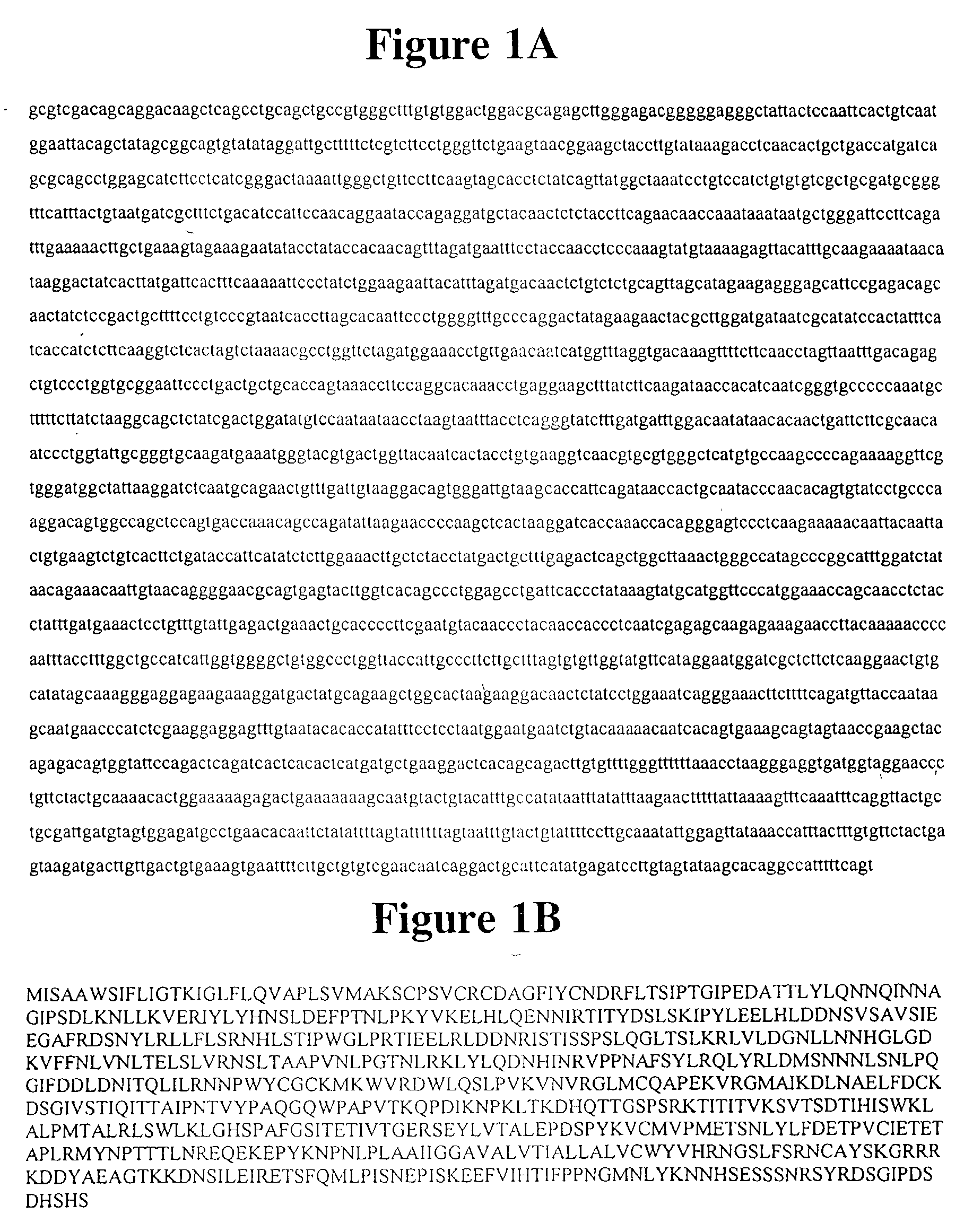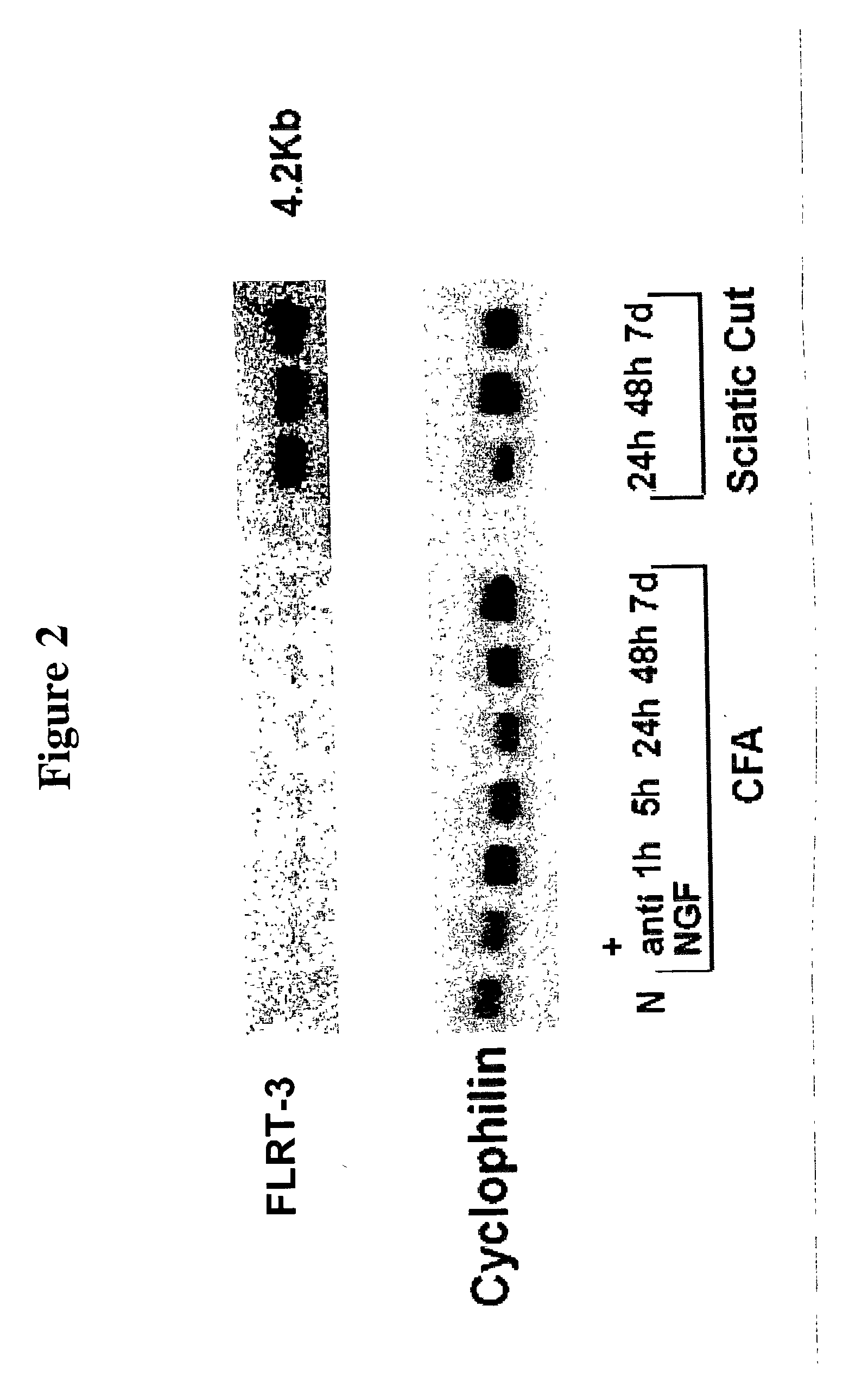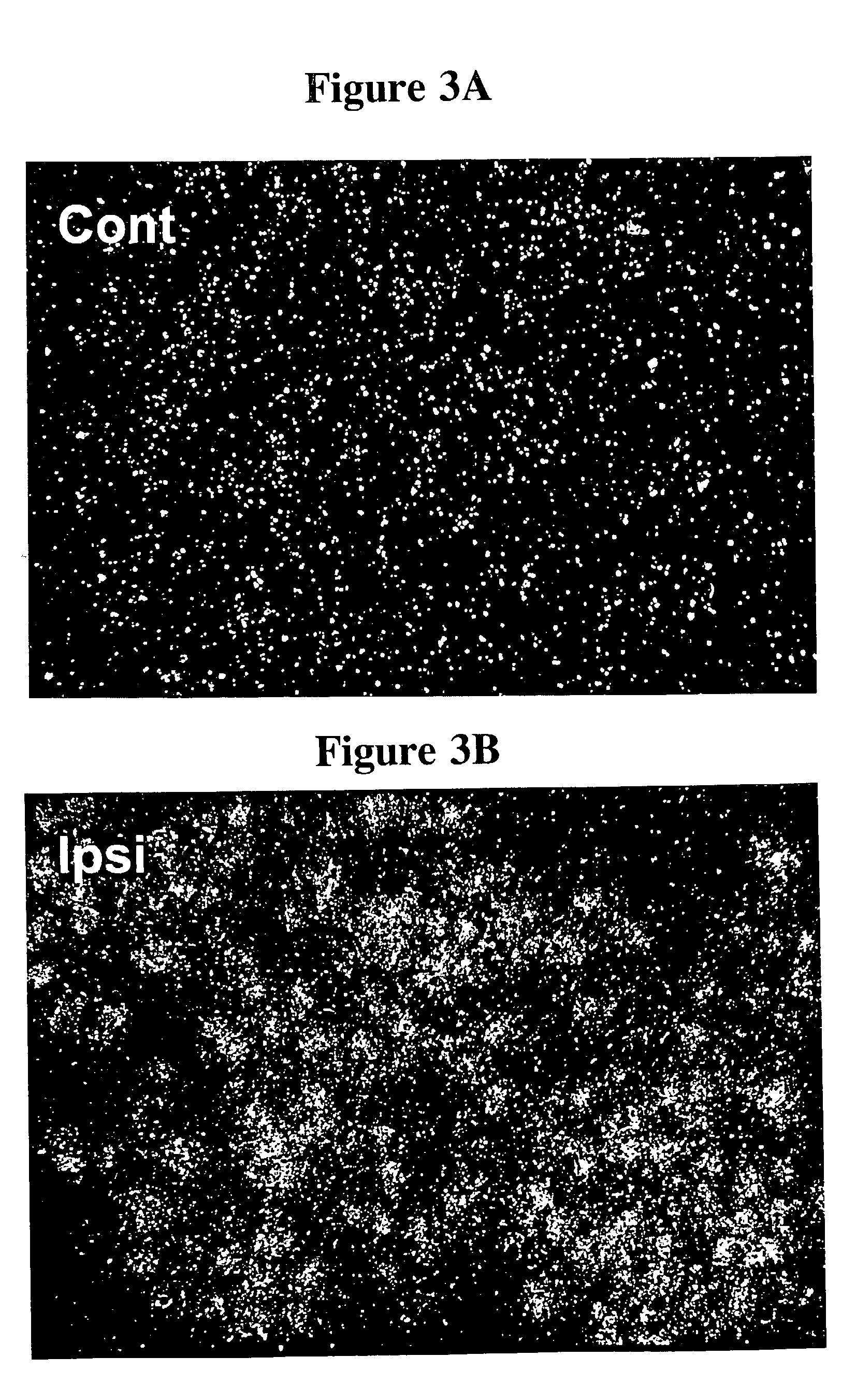Method of regenerating neurons
a technology of regenerating neurons and axons, which is applied in the field of regenerating neurons, can solve the problems of failure of neurons to regenerate axons in the damaged brain and spinal cord, the consequences of brain and spinal cord injury are often severe and prolonged, and the reasons why regeneration normally fails are still poorly understood
- Summary
- Abstract
- Description
- Claims
- Application Information
AI Technical Summary
Problems solved by technology
Method used
Image
Examples
example 1
Structure of FLRT-3
[0339] We have used differential display of mRNA and cDNA library screening to isolate a gene encoding a protein, previously identified as FLRT-3 in human muscle samples (FIG. 1; Lacy S E et al. (1999) Genomics 15;62:417-26). It is demonstrated herein that FLRT-3 is up-regulated in adult rat DRG 3 days after sciatic nerve crush.
[0340] Structure prediction analysis (FIG. 7) suggests that FLRT-3 is a single pass transmembrane protein comprising a 530 amino acid N-terminal extracellular domain, a 20 amino acid transmembrane domain, and a 99 amino acid C-terminal intracellular domain. Much of the extracellular face consists of a 320 amino acid leucine rich region, containing 10 leucine rich repeats, which is flanked by cysteine rich regions. A fibronectin type III domain follows this. The intracellular region contains no recognisable motifs. This indicates that FLRT-3 may be a cell surface receptor or cell adhesion molecule. It is similar in some respects to NOGO A re...
example 2
Expression of FLRT-3
[0341] As shown in FIG. 2, FLRT-3 mRNA is up-regulated in adult rat lumbar DRG after sciatic cut. Up-regulation is consistent between 24 hours and 7 days post cut. Peripheral inflammation induced by injection of complete Freund's adjuvant (CFA) into the rat hind paw has no effect on FLRT-3 expression. The northern membrane reprobed with constitutively expressed cyclophilin shows equivalent loading of total RNA. (N, naive; NGF, nerve growth factor; h, hours; d, day.)
[0342] Using radio-isotopic ISH, FIG. 3 demonstrates that FLRT-3 mRNA is up-regulated in most neurons of ipsilateral (Ipsi) adult rat lumbar DRG 3 days after sciatic cut. The DRG from the contralateral (uncut) (Cont) side is shown for comparison.
[0343] Radio-isotopic ISH analysis of adult rat lumbar spinal cord (FIG. 4) demonstrates the up-regulation of FLRT-3 mRNA in the ipsilateral (Ipsi) large motor neurons 3 days after sciatic cut. Spinal cord from the contralateral (uncut) (Cont) side is shown for...
example 3
Knockdown of FLRT-3 Protein
[0348] Knockdown of FLRT-3 protein in cultured dissociated adult rat DRG by the application of antisense oligonucleotide produces a decrease in neurite length of approximately 44% and a decrease in neurite number per cell of approximately 43%, relative to control cultures with sense oligonucleotide added (FIG. 10). These decreases are significant (P<0.001, 2-way ANOVA). Prior to statistical analysis, data for neurite length were normalised under a logarithmic function, while those for neurite number were normalised under a square-root function. Data were accumulated from 3 separate experiments.
[0349] The up-regulation of FLRT-3 expression in DRG after peripheral nerve injury suggests that it may play a role in the promotion of neurite outgrowth during regeneration. The effects on neurite outgrowth of knocking down and overexpressing FLRT-3 in vitro in dissociated adult rat DRG are strong evidence for this. Knockdown of FLRT-3 in these cultured neuronal cel...
PUM
| Property | Measurement | Unit |
|---|---|---|
| Tm | aaaaa | aaaaa |
| Tm | aaaaa | aaaaa |
| diameter | aaaaa | aaaaa |
Abstract
Description
Claims
Application Information
 Login to View More
Login to View More - R&D
- Intellectual Property
- Life Sciences
- Materials
- Tech Scout
- Unparalleled Data Quality
- Higher Quality Content
- 60% Fewer Hallucinations
Browse by: Latest US Patents, China's latest patents, Technical Efficacy Thesaurus, Application Domain, Technology Topic, Popular Technical Reports.
© 2025 PatSnap. All rights reserved.Legal|Privacy policy|Modern Slavery Act Transparency Statement|Sitemap|About US| Contact US: help@patsnap.com



